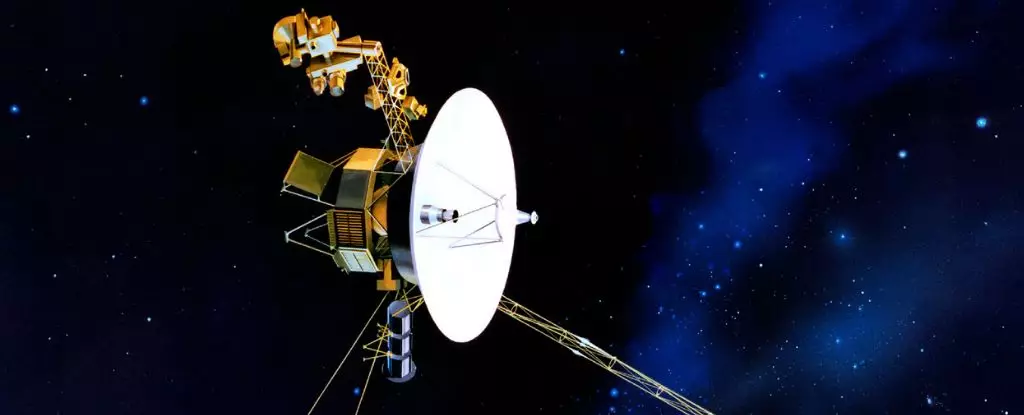Since their launch in the late 1970s, the Voyager spacecraft have captivated the imagination of scientists and enthusiasts alike. Voyager 1 and Voyager 2, which launched in August and September of 1977 respectively, embarked on a mission to explore the outer planets of our solar system. Thanks to a rare alignment of Jupiter, Saturn, Uranus, and Neptune, the spacecraft executed a highly efficient journey that allowed them to gather unprecedented data. Voyager 2, in particular, remains the only spacecraft that has visited the ice giants Uranus and Neptune.
These twin spacecraft were not just monumental achievements in engineering but also pioneers in space exploration. As they traveled past these distant planets, they provided humanity with an intimate look at our cosmic neighbors, revealing previously unseen details about their atmospheres, moons, and ring systems. The stunning images and scientific data transmitted back to Earth transformed our understanding of the outer Solar System and laid the groundwork for future explorations.
As time has marched on, however, the power supply of the Voyager probes has steadily dwindled. Both spacecraft are equipped with radioisotope thermoelectric generators (RTGs) that convert heat from decaying plutonium into electrical power. Initially, these RTGs supplied around 470 watts at launch, but the output diminishes by approximately 4 watts each year, reaching a point where power management becomes critical. As energy resources decline, NASA has been forced to make difficult decisions to ensure the longevity of the mission.
Recently, for example, engineers made the tough choice to deactivate Voyager 2’s plasma science instrument, which measures the quantity and direction of charged particles. This decision reflects a broader trend; for nearly a decade, the mission team has painstakingly strategized to prolong the scientific capabilities of these historic spacecraft. The plasma science instrument, while once invaluable, has proven less effective in recent years due to its operational constraints and the changing dynamics of plasma flows as Voyager 2 continues its journey into interstellar space.
Now in the Voyager Interstellar Mission phase, the probes are engaged in groundbreaking studies of the heliosphere, the bubble-like region that surrounds our solar system, and the interstellar medium beyond it. Voyager 1 crossed the heliopause—the boundary where the solar wind from the sun meets the interstellar medium—on August 25, 2012. Voyager 2 followed closely, entering interstellar space on November 5, 2018. These milestones mark humanity’s first forays into the vast expanse beyond our solar system and illustrate the remarkable endurance of the Voyager mission.
Communication with Earth presents another unique set of challenges. As the spacecraft have ventured farther out, a single transmission takes nearly 24 hours to travel one way, emphasizing the immense distances involved. Scientists rely on the Deep Space Network for this communication, allowing them to receive and analyze the crucial data collected by the instruments that remain operational.
The legacy of the Voyager probes extends beyond mere exploration; they serve as a metaphor for perseverance in the face of adversity. As engineers continue to make the most of dwindling resources, they have had to prioritize which experiments to maintain. The decision to shut down the plasma science instrument is emblematic of the careful planning that has defined the Voyager missions. With limited power available, more data collection is becoming increasingly rare, making every bit of information sent back to Earth invaluable to our understanding of interstellar phenomena.
Interestingly, the same instrument on Voyager 1 ceased functioning in the early 1980s, and NASA plans to preserve Voyager 2’s capabilities for as long as possible, having turned off non-essential systems over the years. This prudent resource management echoes the lessons learned from earlier missions and emphasizes the commitment of NASA engineers and scientists to sustain this pioneering journey.
As we look toward the future, the Voyager spacecraft embody more than just the pursuit of knowledge; they represent humanity’s innate curiosity and desire to explore the unknown. The data collected over the years has transformed our understanding of the universe and will no doubt continue to provide insights for generations to come. As Voyager 2 continues its trek through the cosmos, we are reminded that, while the journey may eventually come to an end, the legacy of discovery and inspiration lives on. Through their groundbreaking work, these remarkable spacecraft have opened up new frontiers, ensuring that we will always seek to reach beyond our home planet and into the vastness of space.


Leave a Reply